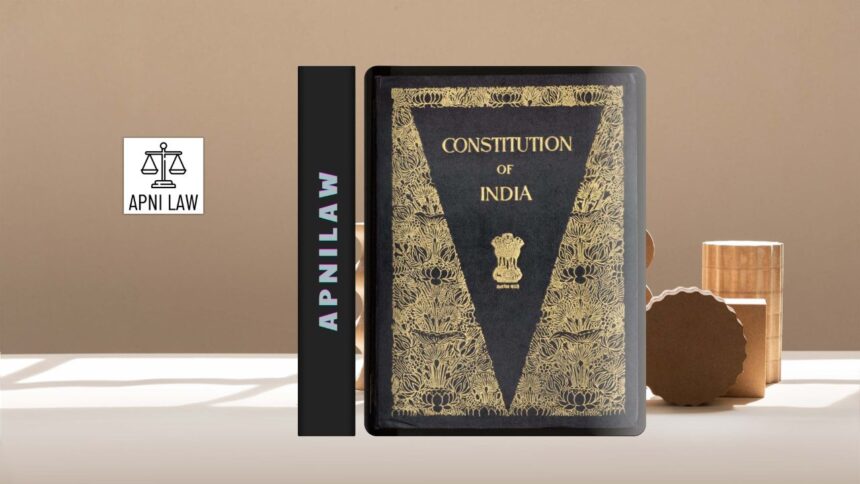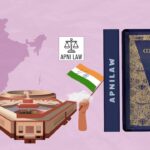Introduction
When a state government fails to function according to the Constitution, the President may impose President’s Rule under Article 356. This situation immediately changes how the state is governed, especially in the area of law-making. Article 357 becomes the central mechanism that determines who exercises legislative powers when the state assembly is suspended or dissolved. Understanding this provision is essential because it explains how governance continues even after an elected government steps aside.
Article 357 helps maintain legal continuity during a constitutional breakdown in a state. It temporarily shifts legislative authority from the state to the Union, ensuring that administration does not come to a halt. This article plays a stabilising role, allowing Parliament or the President to take over law-making responsibilities until the state returns to normal functioning. Given the frequency of President’s Rule in India’s political history, Article 357 remains an important constitutional safeguard that keeps the system running smoothly during emergencies.
Meaning and Scope of Article 357
Article 357 specifies how legislative powers of the state are exercised when President’s Rule is imposed. Once Article 356 is in force, the state legislature’s normal functioning stops, leaving a void in the law-making process. Article 357 fills this void by authorising Parliament to make laws for the state even on matters that normally fall within the State List. It also empowers the President to delegate certain legislative functions to the Governor or another authority, allowing routine governance to continue.
This shift in authority is temporary but necessary. It prevents administrative collapse and keeps essential governmental functions active. The article creates a constitutional bridge during a period when the state machinery is unable to fulfil its duties.
How Legislative Powers Shift During President’s Rule
The moment President’s Rule is proclaimed, the President assumes the executive functions of the state. Legislative functioning, however, is guided by Article 357. Parliament becomes responsible for making laws for the concerned state. This includes laws on matters on which it normally does not legislate. For smoother administration, Parliament may permit the President to issue regulations that carry the force of law.
In practice, the Governor often issues such regulations on behalf of the President. These measures allow quick legislative action when Parliament is not in session. Once the state government is restored, the new state legislature has the power to amend or repeal laws made during this period, ensuring that democratic control is eventually restored.
Relevance and Applicability of Article 357
The relevance of Article 357 becomes clear whenever a state is unable to function under constitutional norms. Political instability, internal disturbance, breakdown of law and order, or failure to comply with constitutional directions can trigger President’s Rule. During such periods, Article 357 keeps the legal and administrative processes alive.
The article prevents gaps in governance. Budgets still need approval, taxes continue to be collected, public expenditure requires legal backing, and ongoing development or welfare schemes must be supervised. Article 357 ensures that these tasks do not suffer. Parliament or the President can act promptly, yet within constitutional limits, ensuring that power is not misused.
India’s history shows the importance of this provision. States like Punjab, Jammu & Kashmir, and Bihar have seen extended periods of President’s Rule during which essential legislative decisions were made under Article 357. The provision continues to be a practical tool for maintaining order in extraordinary circumstances.
Case Law and Judicial Interpretation
Judicial scrutiny has shaped the understanding of Article 357. In S.R. Bommai v. Union of India, the Supreme Court established strict guidelines on when President’s Rule can be imposed. Although the case focused primarily on Article 356, it strengthened the constitutional safeguards that also protect the use of Article 357. The Court emphasised that President’s Rule is an exceptional measure and not a tool for political misuse.
In State of Rajasthan v. Union of India, the Court upheld Parliament’s power to legislate for states under President’s Rule. The judgment highlighted that Article 357 is intended to ensure continuity in governance, not to undermine federalism. These judicial positions confirm that Article 357 must be used responsibly, and only within constitutional boundaries.
Practical Use of Article 357
In real situations, Article 357 supports essential governance during President’s Rule. Budgets must be sanctioned, financial decisions must continue, and ongoing government schemes require legal approval. Parliament often enacts necessary legislation for the state or authorises the President to issue immediate regulations.
For example, during long periods of President’s Rule in Punjab in the 1980s, the Union Government passed several important laws to handle security and financial matters. In Jammu & Kashmir, similar powers were exercised before the state’s reorganisation in 2019. These examples show that Article 357 is not just theoretical; it directly affects administration during crises.
Importance in India’s Federal Structure
Article 357 plays an important part in India’s federal design by allowing a temporary and constitutionally controlled transfer of power from a state to the Union. It creates a balance by giving the Union enough authority to maintain governance without permanently taking away the state’s autonomy. When the crisis ends, the state legislature regains full control.
This temporary nature preserves India’s cooperative federalism. It allows the Union to intervene only when necessary, while ensuring that the democratic structure of state governance is restored at the earliest possible moment.
FAQ Section
What does Article 357 allow?
It allows Parliament or the President to exercise the legislative powers of a state during President’s Rule.
Who makes laws for a state under President’s Rule?
Parliament becomes the primary law-making authority, and the President or Governor may issue regulations if authorised.
Are laws made under Article 357 permanent?
No. Once the state legislature is restored, it can amend or repeal those laws.
Does Article 357 affect federalism?
It affects federal balance temporarily but does not damage federalism because powers return to the state after normalcy is restored.
Conclusion
Article 357 ensures that governance continues smoothly during President’s Rule by providing a temporary mechanism for exercising a state’s legislative powers. It enables Parliament and the President to act in situations where the state government cannot fulfil its constitutional responsibilities. At the same time, it maintains India’s federal balance by ensuring that such powers are returned once a new state government is elected. The article is a vital constitutional safeguard that keeps legal and administrative systems functioning during political or constitutional crises. For readers who want to understand the Indian Constitution in simple language, exploring provisions like Article 357 helps clarify how the nation handles emergencies while protecting democratic principles.
For any specific query call at +91 – 8569843472








